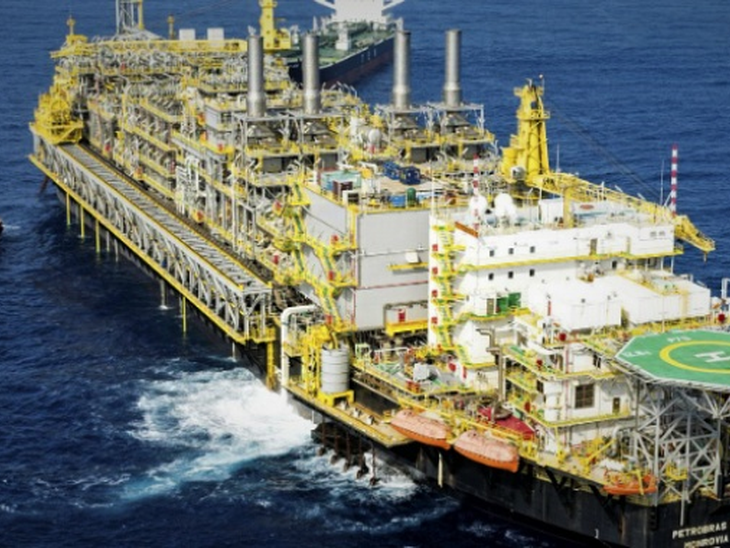In April, pre-salt production was 2.597 MMboe / d, which represented almost 70% of the national total
T&B Petroleum/Press Office ANP
02/06/2020 18:40

In April, pre-salt production was 2.597 MMboe / d (millions of barrels of oil equivalent per day), which corresponds to 69.5% of the national total. 2,057 MMbbl / d (million barrels per day) of oil and 86 MMm3 / d (million m3 per day) of natural gas were produced through 113 wells. There was an increase of 4.2% in relation to the previous month and 31.2% in relation to April 2019.
The April issue of the Bulletin is available at http://www.anp.gov.br/publicacoes/boletins-anp/2395-boletim-mensal-da-producao-de-petroleo-e-gas-natural.
National production was 3.738 MMboe / d, with 2.958 MMbbl / d of oil and 124 MMm3 / d of natural gas. Oil production decreased 0.5% compared to the previous month and increased 13.6% compared to April 2019. In relation to the production of natural gas, there was an increase of 1.9% in relation to March and 9 , 8% compared to the same month of the previous year.
The April Production Bulletin also lists the fields and maritime facilities that had their activities paralyzed due to the effects of the COVID-19 pandemic. During the month of April, 38 fields had their respective production temporarily interrupted - of which 21 seafarers and 17 onshore - and a total of 66 marine production facilities interrupted their activities.
Use of natural gas
In April, the use of natural gas was 97.8%. 50.6 MMm³ / day were made available to the market. Gas flaring in the month was 2.724 MMm³ / d, a reduction of 19.8% compared to the previous month and 54.9% compared to the same month in 2019. This reduction is due to the end of a long-term test (TLD) in the maritime portion of the Sergipe Alagoas Basin and the lowest burning in the Lula and Búzios fields.
Origin of production
In April, offshore fields produced 96.7% of oil and 86% of natural gas. The fields operated by Petrobras were responsible for 94.9% of the oil and natural gas produced in Brazil. However, fields with Petrobras' exclusive participation produced 39.9% of the total.
Highlights
The Lula field, in the Santos Basin, was the largest producer of oil and natural gas, registering 1.033 Mbbl / d of oil and 45.7 MMm3 / d of natural gas.
The P-75 platform (photo), producing in the Búzios and Tambuatá fields, through four interconnected wells, produced 158.556 Mbbl / d of oil and was the facility with the highest oil production.
The Pole Arara installation, producing in the Arara Azul, Araracanga, Carapanaúba, Cupiúba, Rio Urucu and Sudoeste de Urucu fields, through 35 wells, produced 7.629MMm³ / d and was the installation with the highest production of Natural Gas.
Estreito, na Bacia Potiguar, teve o maior número de poços produtores terrestres: 1.079.
Marlim Sul, na Bacia de Campos, foi o campo marítimo com maior número de poços produtores: 67.
Marginal accumulation fields
These fields produced 48.2 bbl / d of oil and 10 Mm³ / d of natural gas. The Iraí field, operated by Petroborn, was the largest producer, with 60.1 boe / d.
Other information
In April 2020, 272 areas granted, two areas for consideration and five sharing areas, operated by 33 companies, were responsible for national production. Of these, 59 are offshore and 213 onshore, seven of which refer to contracts for areas containing marginal accumulations. Production took place in 6,989 wells, 508 offshore and 6,481 onshore.
The average API grade was 27.9, with 2.9% of production considered light oil (> = 31 ° API), 87.6% average oil (> = 22 API and <31 API) and 9.5% oil heavy (<22 API).
The mature onshore basins (fields / long-term tests in the Espírito Santo, Potiguar, Recôncavo, Sergipe and Alagoas basins) produced 98.8 Mboe / d, of which 79.4 thousand bbl / d of oil and 3.1 MMm³ / d of natural gas. Of this total, 87,200 boe / d were produced by Petrobras and 11,600 boe / d were produced by concessions not operated by Petrobras, of which: 333 boe / d in Alagoas, 3,157 boe / d in Bahia, 6 boe / d in Espírito Santo, 7,925 boe / d in Rio Grande do Norte and 214 boe / d in Sergipe.





